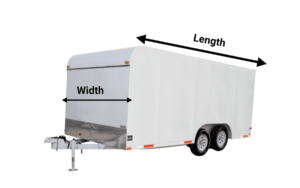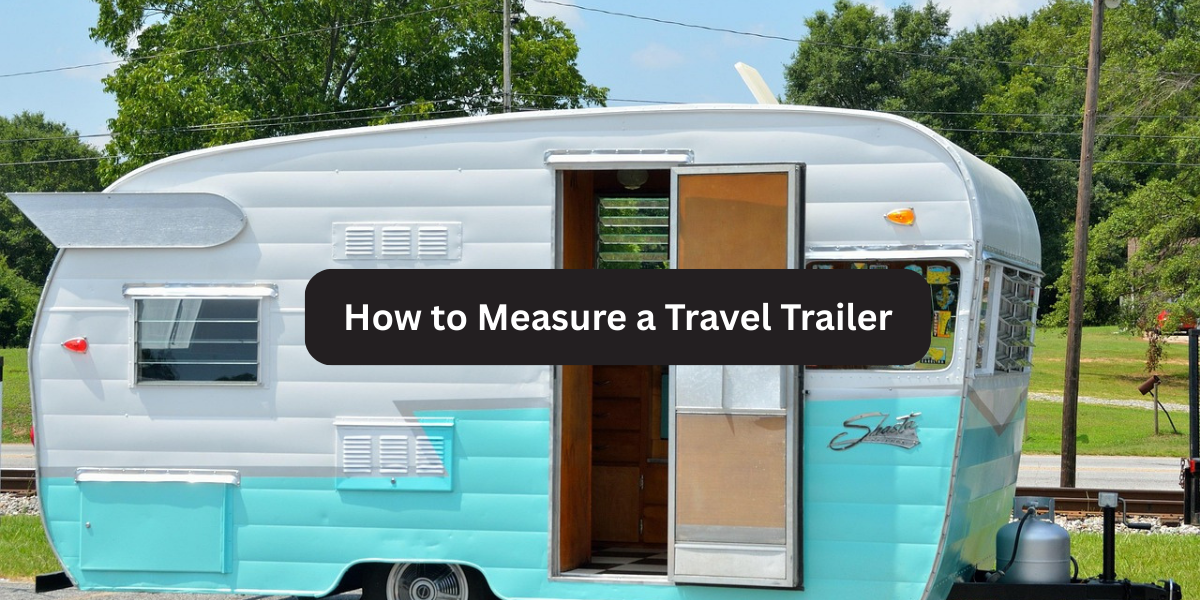Buying, selling, towing, or parking a travel trailer? One of the first things you’ll need to know is its size. But measuring a travel trailer isn’t as straightforward as grabbing a tape measure and jotting down a few numbers. It’s more nuanced than many realize especially when your trailer’s length, width, and height impact everything from campsite compatibility to legal towing limits.
In this comprehensive guide, we’ll break down how to measure a travel trailer the easy way, ensuring you get precise, usable dimensions. Whether you’re a first-time RV owner or a seasoned road-tripper, this guide is packed with practical tips, common pitfalls to avoid, and expert advice to help you navigate the process.
Why Accurate Trailer Measurements Matter

Understanding the true size of your travel trailer is crucial for several reasons:
- Legal Compliance: States often have length and height restrictions for towed trailers.
- Campsite Booking: Campgrounds typically list maximum allowable trailer lengths.
- Storage Space: You’ll need precise measurements to ensure a proper fit in driveways or storage units.
- Towing Safety: Knowing the size helps determine if your vehicle can safely tow the trailer.
- Insurance & Registration: Some policies require accurate trailer specs.
Types of Travel Trailer Measurements You Need to Know
Before measuring, it helps to know what you’re measuring. Here are the key dimensions:
1. Overall Length (Tip-to-Tail)
This is the total length from the farthest point in the front to the rearmost part, including hitches, bumpers, and rear-mounted accessories like bike racks or spare tires.
✅ Why it matters: Used by campgrounds and legal authorities to determine total trailer size.
- Tip: Always include the tongue/hitch in your measurement it’s a common oversight!
2. Box Length (Living Space)
This is the interior living area, excluding the hitch and rear accessories. Manufacturers often advertise this length, which can be misleading for campsite bookings or towing limits.
✅ Why it matters: Helps compare usable living space between different trailer models.
3. Exterior Width
- Measure the widest part of the trailer, including side mirrors and awnings (if they’re fixed in place).
- Standard trailers are typically around 8 feet wide
- Some compact models go as narrow as 6 feet
✅ Why it matters: Affects towing clearance and lane-keeping on narrow roads.
4. Exterior Height
Includes the height from the ground to the topmost fixed point, such as an AC unit or antenna.
✅ Why it matters: Low-clearance bridges and overhangs are real hazards on the road.
5. Interior Height
From floor to ceiling inside the trailer important for comfort, especially for taller individuals.
✅ Why it matters: Impacts livability and headroom.
Tools You’ll Need for Accurate Measuring
Getting precise measurements requires the right tools. Here’s what you should have:
- 25–50 ft Measuring Tape – For length and width
- Laser Distance Measurer – Great for interior measurements
- Level Tool – To ensure the trailer is on a flat surface when measuring
- Ladder – To access roof height safely
- Notebook or Measuring App – To record dimensions easily
Step-by-Step: How to Measure a Travel Trailer the Easy Way
Step 1: Park on Level Ground
Ensure your trailer is on a flat, even surface. Use leveling blocks if necessary.
Step 2: Measure Overall Length
- Start at the tip of the hitch/tongue
- Measure all the way to the farthest point at the back (include spare tires or ladders)
- Use a second person if needed for accuracy
Step 3: Measure Box Length
- Ignore the hitch
- Measure only the box or body of the trailer
Step 4: Measure Width
- Measure from one side of the trailer to the other
- Include protruding parts like mirrors or fixed awnings
Step 5: Measure Height
- Use a ladder and tape from the ground to the tallest point (often the AC unit)
- For interior height, measure from the floor to the ceiling inside
Step 6: Double Check Everything
- Double-check all measurements. Record them clearly and label which is which (e.g., “overall length” vs. “box length”).
Pro Tips for Measuring Like a Pro
- Use chalk or masking tape to mark the ground where you start and end measurements.
- Measure with someone else—especially for longer dimensions.
- Check your trailer’s documentation for manufacturer specs to cross-verify.
- Measure twice, write once to avoid costly errors.
- Take photos with your measurements noted for insurance or campground bookings.
Common Mistakes to Avoid
- Not including the hitch in overall length
- Using interior dimensions for campsite planning
- Ignoring roof-mounted accessories like satellite domes or solar panels
- Assuming manufacturer specs are always accurate
Real-World Example: Booking a Campsite with the Wrong Measurement
John, a weekend traveler, booked a site at a national park based on his trailer’s box length (22 feet). When he arrived, the ranger pointed out that his full length was actually 28 feet, including the hitch and rear rack. The site was too small, and he had to move to a less desirable spot. Lesson learned: Always measure full length!
When to Re-Measure Your Travel Trailer
You should consider re-measuring if:
- You’ve added accessories (bike rack, satellite dish, solar panel)
- You’re switching tow vehicles and need updated towing specs
- You’re storing your trailer in a new location
Conclusion
Knowing how to measure a travel trailer the right way is essential for safe travels, proper storage, and seamless camping experiences. From overall length to interior height, understanding each measurement helps you make informed decisions—whether you’re towing cross-country or parking in your backyard.
Now that you’re equipped with expert insights, grab that tape measure and take action! Make sure your dimensions are up-to-date, accurate, and ready for the road ahead.

